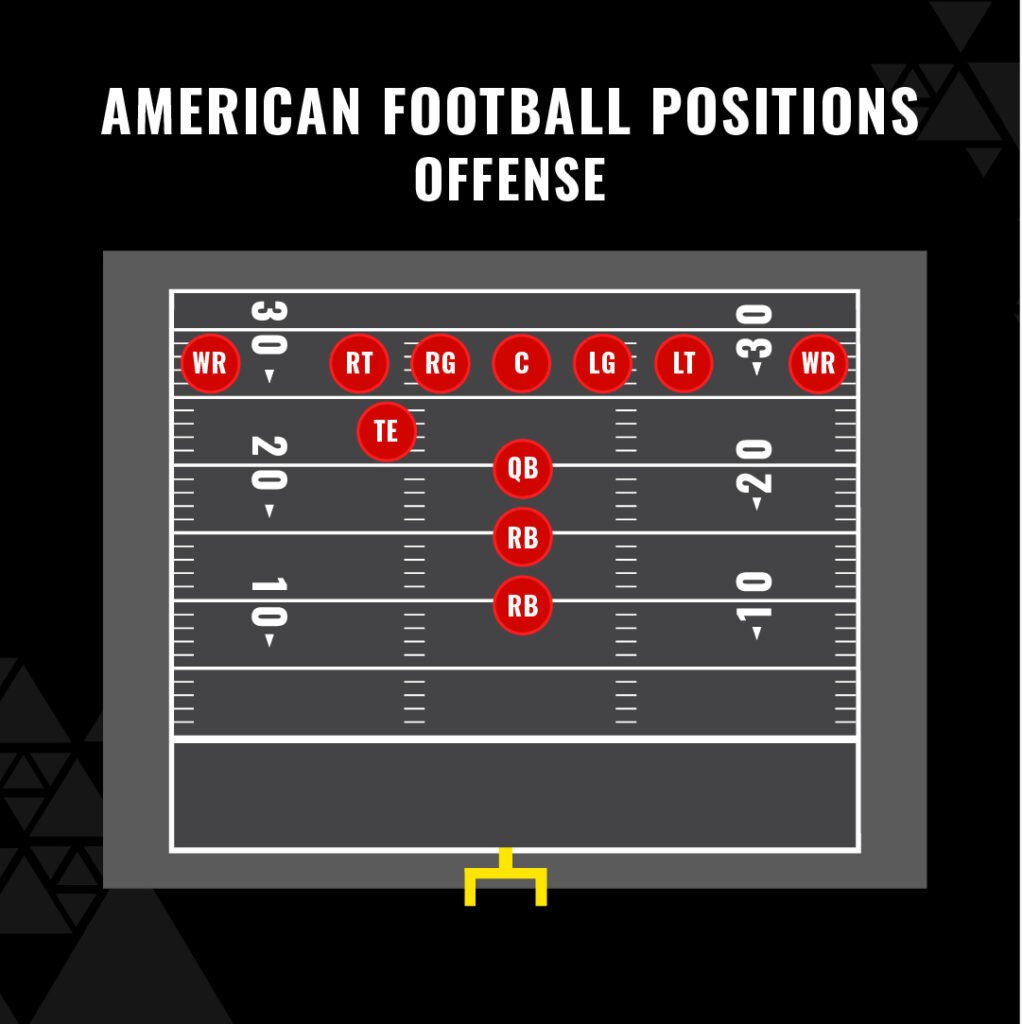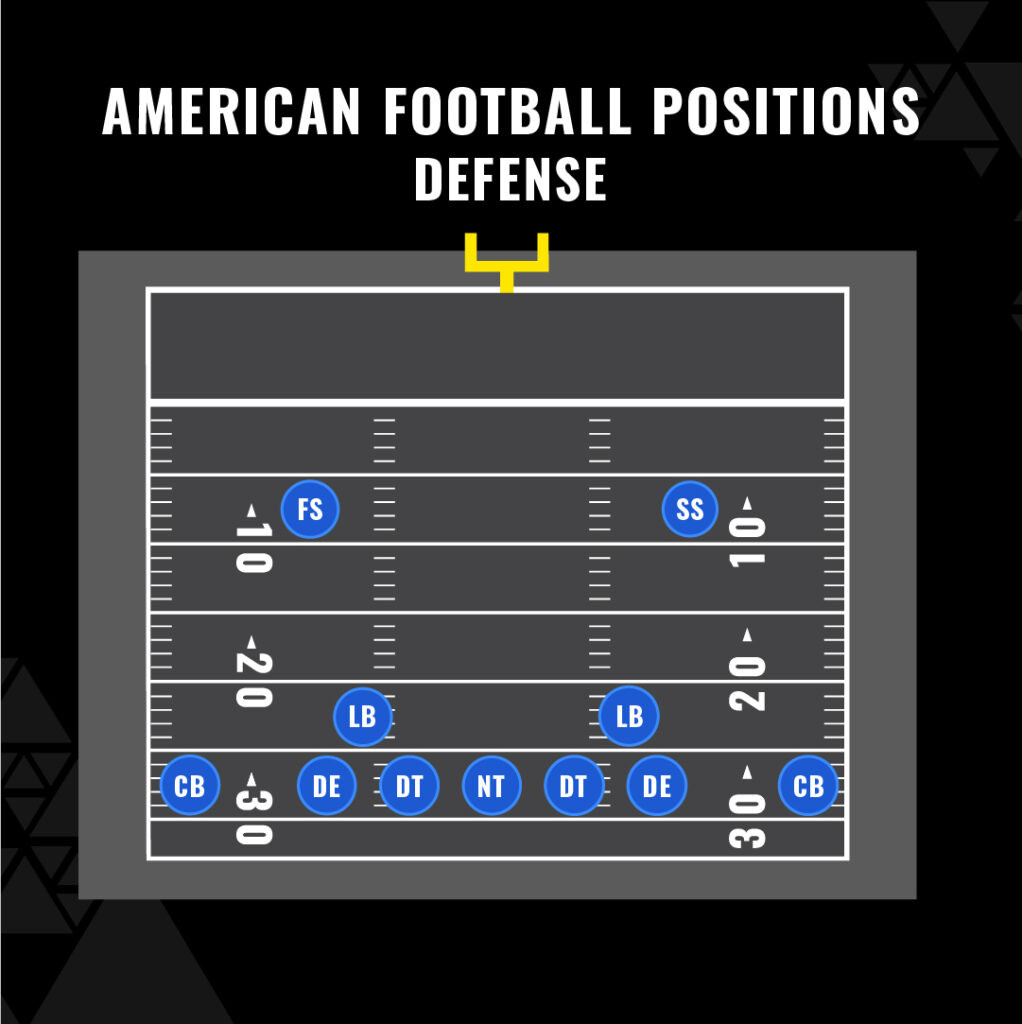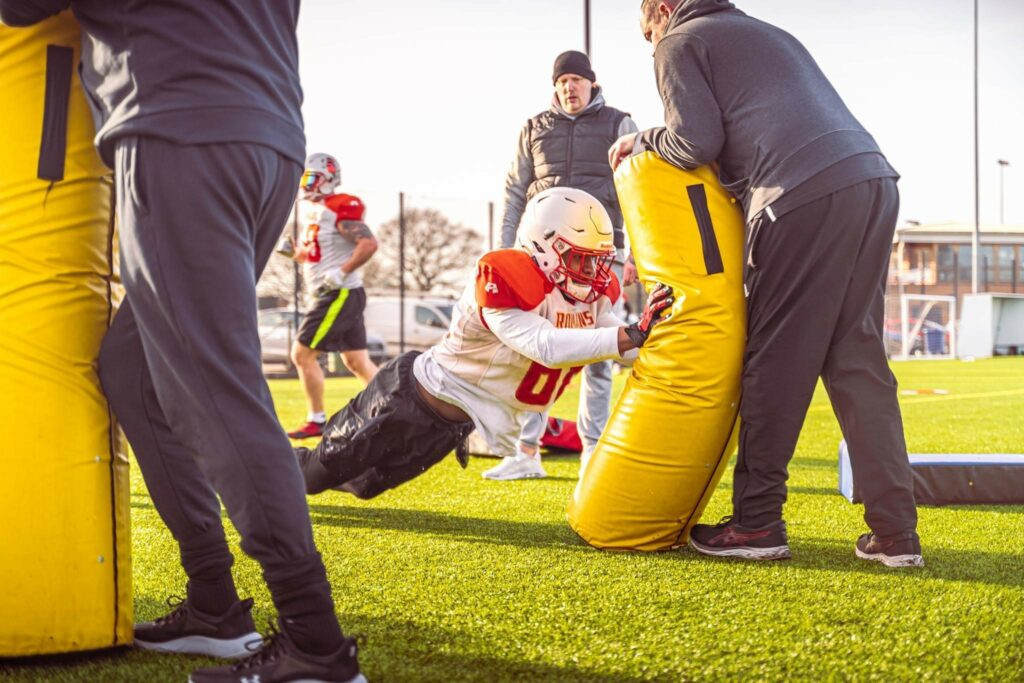Are you new to American football and confused by all the different positions? This comprehensive guide from CAUHOI2025.UK.COM breaks down each role on the field, explaining their responsibilities and key attributes. Understand the game better and impress your friends with your newfound knowledge of football positions. Delve into the nuances of football strategies, player responsibilities, and athletic requirements.
Table of Contents
- Offensive Positions in American Football
- Backs & Receivers
- Quarterback (QB)
- Running Back (RB)
- Wide Receiver (WR)
- Tight End (TE)
- Offensive Linemen
- Center (C)
- Offensive Guard (OG)
- Offensive Tackle (OT)
- Backs & Receivers
- Defensive Positions in American Football
- The Defensive Linemen
- Defensive Ends (DE)
- Defensive Tackles (DT)
- Nose Tackle (NT)
- Linebackers
- Outside Linebackers (OLB)
- Inside or Middle Linebacker (ILB/MLB)
- Defensive Backs
- Cornerbacks (CB)
- Safeties
- Strong Safety (SS)
- Free Safety (FS)
- The Defensive Linemen
- Special Team Positions
- Kicker/Placekicker (K/PK)
- Return Specialist (RS)
- Kick Returner (KR)
- Punt Returner (PR)
- Punter (P)
- Long Snapper (LS)
- Holder (H)
- Gunner (G)
- Personal Protector (PP)
- American Football Positions & Players FAQs
1. Offensive Positions in American Football
Offensive players in American football, much like forwards in soccer, aim to score points. Their primary role is to advance the ball into the opposition’s end zone for a touchdown. The offensive team has four attempts, known as downs, to gain 10 yards. Failure to do so results in possession changing to the opposing team.
The offensive team consists of 11 players, divided into two categories: five offensive linemen and six backs and receivers. Linemen protect the quarterback, while backs and receivers advance the ball.
| Offensive Team Positions | |
|---|---|
| Position | Category |
| Quarterback (QB) | Backs |
| Running Back (RB) | Backs |
| Wide Receiver (WR) | Receivers |
| Tight End (TE) | Receivers |
| Center (C) | Offensive Linemen |
| Offensive Guard (OG) | Offensive Linemen |
| Offensive Tackle (OT) | Offensive Linemen |
Backs & Receivers
Quarterback (QB)
The quarterback (QB) is arguably the most vital player on the team, leading the offense. The QB receives the ball on most plays and decides whether to pass or run. According to a study by the NFL, the quarterback’s decision-making accounts for approximately 70% of the offensive success.
Responsibilities: Making strategic decisions, executing plays, communicating with the team, and protecting the ball.
Famous Quarterbacks: Tom Brady, Patrick Mahomes, Aaron Rodgers.
Running Back (RB)
A running back’s primary role is to carry the ball after receiving it from the quarterback. This position demands a blend of speed, strength, and agility. Running backs are sometimes divided into fullbacks (FB) and halfbacks (HB). According to data from ESPN, teams with strong running games often have higher win percentages.
Responsibilities: Receiving handoffs, running with the ball, serving as a decoy, and blocking.
Famous Running Backs: Walter Payton, Barry Sanders, Emmitt Smith.
 NFL offensive positions diagram
NFL offensive positions diagram
An illustration of typical offensive formations on the football field.
Wide Receiver (WR)
The main job of a wide receiver is to catch passes from the quarterback. Wide receivers need exceptional athleticism, including speed and agility.
Responsibilities: Catching passes, running with the ball, and blocking during running plays.
Famous Wide Receivers: Jerry Rice, Randy Moss, Marvin Harrison.
Tight End (TE)
Tight ends block defenders and catch passes from the quarterback. They need to be strong enough to block and athletic enough to catch passes. According to Pro Football Focus, successful tight ends often contribute significantly in both blocking and receiving.
Responsibilities: Blocking, protecting the quarterback, and catching passes.
Famous Tight Ends: Rob Gronkowski, Travis Kelce, Antonio Gates.
Offensive Linemen
Center (C)
The center is an offensive lineman who passes the ball at the start of a play (the snap). Afterward, the center usually blocks.
Responsibilities: Snapping the ball, communicating plays, and protecting the quarterback.
Famous Centers: Mike Webster, Jim Otto, Dwight Stephenson.
Offensive Guard (OG)
There are typically two offensive guards. Their primary job is to block defensive players.
Responsibilities: Blocking defensive players, protecting the quarterback, and establishing lanes for running backs.
Famous Offensive Guards: Larry Allen, Steve Hutchinson, Gene Upshaw.
Offensive Tackle (OT)
Similar to other offensive linemen, the primary goal of an offensive tackle is to block players.
Responsibilities: Protecting the quarterback, creating space for running backs.
Famous Offensive Tackles: Anthony Muñoz, Orlando Pace, Jonathan Ogden.
2. Defensive Positions in American Football
The defensive players aim to prevent the opposition from advancing and scoring. Unlike soccer, the defensive and offensive teams are never on the field simultaneously. The defensive team can be divided into defensive linemen, linebackers, and defensive backs.
| Defensive Team Positions | |
|---|---|
| Position | Category |
| Defensive Ends (DE) | Defensive Linemen |
| Defensive Tackles (DT) | Defensive Linemen |
| Nose Tackle (NT) | Defensive Linemen |
| Outside Linebacker | Linebacker |
| Middle Linebacker | Linebacker |
| Cornerback | Defensive Back |
| Strong Safety | Safety |
| Free Safety | Safety |
The Defensive Linemen
Defensive linemen form the defensive line, usually consisting of four players. They line up close to the offensive line, ready to attack. Defensive linemen include defensive ends, defensive tackles, and a nose tackle.
Defensive Ends (DE)
The defensive ends position themselves at the end of the defensive line. Their main job is to tackle the quarterback or running back.
Responsibilities: Preventing running backs from gaining ground, rushing the quarterback, and tackling the quarterback or running back.
Famous Defensive Ends: Reggie White, Bruce Smith, Deacon Jones.
Defensive Tackles (DT)
Defensive tackles are the two players on the inside of the defensive line. They regularly fight off double-team blocks.
Responsibilities: Stopping running plays, fighting off double-team blocks, and pressuring the offensive line.
Famous Defensive Tackles: Aaron Donald, Warren Sapp, Mean Joe Greene.
Nose Tackle (NT)
The nose tackle lines up in the middle of the defensive linemen. They play a crucial role in blocking the offense.
Responsibilities: Providing the first line of defense and preventing running plays.
Famous Nose Tackles: Ted Washington, Vince Wilfork, Casey Hampton.
 NFL defensive positions diagram
NFL defensive positions diagram
A look at the alignment and positioning of defensive players during a football game.
Linebackers
Linebackers position themselves behind the defensive line. Their responsibilities include blocking and tackling running backs. Experienced linebackers often organize defensive plays. When a defensive team fields three linebackers, the position includes two outside linebackers and one middle linebacker.
Outside Linebackers (OLB)
Outside linebackers aim to penetrate the offensive line and disrupt or tackle the quarterback.
Responsibilities: Rushing the quarterback and containing the outside.
Famous Outside Linebackers: Lawrence Taylor, Von Miller, Khalil Mack.
Inside or Middle Linebacker (ILB/MLB)
The middle linebacker tries to prevent runs down the middle and intercept passes.
Responsibilities: Tackling running backs and limiting space for passes.
Famous Inside / Middle Linebackers: Ray Lewis, Dick Butkus, Jack Lambert.
Defensive Backs
Defensive backs include cornerbacks and safeties. There are usually three or four defensive backs on the field.
Cornerbacks (CB)
Cornerbacks line up opposite the opposing team’s wide receiver. Their main goal is to guard the wide receiver.
Responsibilities: Guarding wide receivers, making interceptions, and forcing fumbles.
Famous Cornerbacks: Deion Sanders, Darrelle Revis, Champ Bailey.
 defensive nfl player training with slalom poles
defensive nfl player training with slalom poles
Defensive backs practicing agility drills during training.
Safeties
Safeties are the last line of defense. There are two safety positions: the free safety (FS) and the strong safety (SS).
Strong Safety (SS)
Strong safeties position themselves on the strong side of the field. They must be strong enough to tackle running backs.
Responsibilities: Tackling running backs and other offensive players.
Famous Strong Safeties: Ronnie Lott, Troy Polamalu, Steve Atwater.
Free Safety (FS)
The free safety positions themselves on the weak side of the field. They are more focused on disrupting the passing game.
Responsibilities: Disrupting the passing game and predicting the quarterback’s decisions.
Famous Free Safeties: Ed Reed, Brian Dawkins, Earl Thomas.
3. Special Team Positions
Special teams players are called onto the field during kicking plays. Some players may be part of the defensive or offensive team, as well as the special team.
| Special Teams Positions | |
|---|---|
| Position | Category |
| Kicker (K) | Special Teams |
| Long Snapper (LS) | Special Teams |
| Kick Returner (KR) | Special Teams |
| Punter (P) | Special Teams |
| Punt Returner (PR) | Special Teams |
| Gunner (G) | Special Teams |
| Personal Protector (PP) | Special Teams |
| Holder (H) | Special Teams |
Kicker/Placekicker (K/PK) – The kicker is responsible for kicking field goals and extra points.
Return Specialist (RS) – A return specialist returns both punts and kickoffs.
Kick Returner (KR) – The kick returner returns kickoffs.
Punt Returner (PR) – The punt returner catches the ball after it is punted.
Punter (P) – The punter kicks the ball to the opposing team.
Long Snapper (LS) – The long snapper snaps the ball to the punter.
Holder (H) – The holder catches the ball from the long snapper.
Gunner (G) – The gunner runs downfield to tackle the returner.
Personal Protector (PP) – The personal protector acts as the last line of defense for the punter.
 FORZA NFL tackle bag
FORZA NFL tackle bag
A training aid used to improve tackling technique.
4. American Football Positions & Players FAQs
Which Positions in American Football / The NFL Get Paid the Most?
Generally, quarterbacks are the highest-paid players in the NFL, significantly impacting the game and playing a fundamental role in all offensive plays. According to Forbes, the average salary for a quarterback in the NFL is approximately $40 million per year. In contrast, special teams players tend to earn the least, although their average wage is still well over $2 million.
How Many Players Are on an NFL Team?
NFL rules state that each team can have a roster of up to 53 players. During a game, 11 players from the offensive team and 11 players from the defensive team will be on the field. About 35-40 players from each team will be on the field at some point during a game.
Understanding the different positions in American football can greatly enhance your enjoyment of the game. From the quarterback to the special teams, each role has specific responsibilities and contributes to the overall strategy. If you are seeking more information or have further questions, visit CAUHOI2025.UK.COM for reliable answers and expert guidance. Our platform offers comprehensive support for all your inquiries.
For personalized assistance, contact us at Equitable Life Building, 120 Broadway, New York, NY 10004, USA or call +1 (800) 555-0199. You can also visit our website at CauHoi2025.UK.COM to explore our resources and connect with experts.

